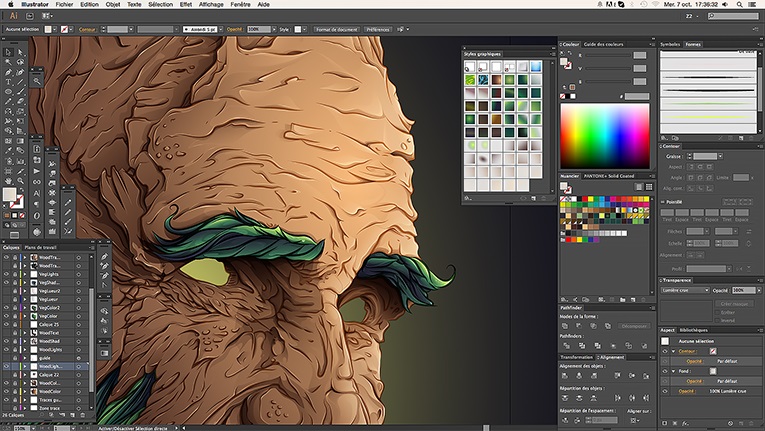

Objects are often part of larger groups and you may find it difficult to work on individual objects. It becomes easier to mix and match different color combinations and make swift changes as the project progresses. The tool is used for quick, centralized control of all colors in an artwork. If your illustration is in progress, and you have to change or try a different color palette, the recolor tool could be your choice. The accuracy of the trace depends on the quality and complexity of the image. It converts your image to vector graphics. It is when you have to change raster images to vector, go to window -> Image trace and select the preferred outcome and click expand. This is where the Image trace option comes into play. If you need to make changes in illustrator, you need vector graphics. Pixels are raster images and look blurred when we use a larger layout. The major objective of adobe illustrator is working with vectors. Find the most used tools and snap them to the side to save time. This is why it is important to arrange and organize our workspace before we start working. Although it is a great advantage, it is also the biggest downfall when we spend so much time searching for a particular tool when we work. Arrange your workspaceĪdobe Illustrator has a lot of tools arranged in different tabs under the perimeter of the interface. It can also be used for controlled viewing of the drawings at different stages. Illustrator has a detailed layer panel and so if we maintain and organize appropriate layers, it will be easier for us to navigate and make changes in the drawing. Maintain organized layersĪs with Photoshop, you have to keep an eye on layers in illustrator. An advantage of illustrator is that it has a preset swatch of colors which saves time in creating swatches for portfolios and presentation boards. You can create swatches with colors of your choice and use them for later use.
#Most important adobe illustrator tools full#
You have the full creative freedom of colors in illustrator. The super bonus tip is that the artboards can be of different layouts or sizes and can work on all at the same time. You can work on multiple artboards and save them as a portfolio document or save individual files as an image. The most important life saver of adobe illustrator is the multiple artboards. Here are some of the tips in adobe illustrator for architecture students. Hence, the illustrator is gaining much importance among architecture students. Architectural drawings are often made visually appealing through Illustrator and concept diagrams are found easier to be done.

As many have preferred Photoshop for graphics in architecture, Adobe Illustrator is becoming the industry standard for creating clear and neat graphics that can communicate complex ideas. RBG works best when your work will be viewed on monitors! Perform “File > Document Color Mode” from the Task Bar and select appropriately.Architects always use visuals and graphics to translate their ideas.

#3: Is your document in the correct color format for its purpose? If your work is going to be printed, CMYK is going to be preferred. Right click on your text and select “Create Outlines” from the dropdown menu. This will make sure that the outline will scale with the rest of your image. Select your strokes and perform “Object> Path > Outline Stroke” from the Task Bar. #1: Are all your strokes changed to paths? Tip: Don’t forget the essentials when exporting your work! Here is a checklist to follow: If your work needs to retain its vector qualities, then try saving as a. png then this will do the job (you can also export as. Here you can freely edit the dimensions of your final image and effortlessly make the background transparent. One of your best options includes “Export for Web” (the handy yet somewhat cumbersome hotkey combo of Shift + Option + Command + S will take you there).


 0 kommentar(er)
0 kommentar(er)
